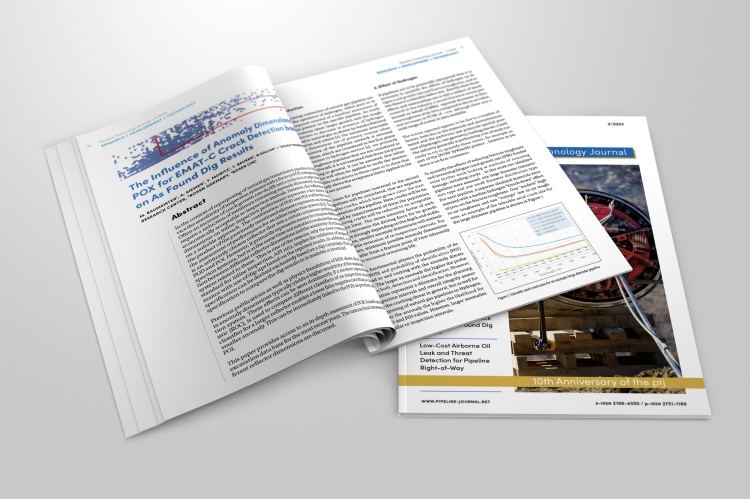The Influence of Anomaly Dimensions on POX for EMAT-C Crack Detection based on As Found Dig Results

In the context of repurposing of natural gas transmission pipelines to Hydrogen service the sensitivity of inspection systems with a focus on POX is frequently discussed. Often an increase of crack growth rate da/dN and a reduction in pipe steel toughness require a reduction of minimum remaining anomaly dimensions, in order to satisfy economically acceptable re-inspection intervals. However, the influence of anomaly dimensions on inline inspection performance represents a key metric for decision on a suitable approach. The combination of POD and POI within the term POX and the product of the previously mentioned elements represents an accepted metric for the assessment of performance for an inline inspection system (ILI). The foundation is an arbitrarily chosen reflector that sets a certain minimum performance for both POD and POI. However, it primarily represents means to compare different inline inspection systems, but is at the same time not suitable to evaluate the complex interaction between different reflector dimensions and the sensitivity of a chosen inspection system related to these. This is one of the reasons, why the most commonly applied standard for inline inspection, API 1163, implies the validation of inspection performance with use of dig-ups based on the reported results. In addition, a performance specification can be derived exclusively based on a dig-campaign, if no performance specification to compare the dig-results to is available at forehand.
Previous publications as well as physics foundations of NDE show, that an increase in anomaly dimensions typically yields a higher sensitivity of the underlying inspection system. These effects can be seen dominantly, if a receiver operator characteristic (ROC), is used to compare different classifiers of an inspection system. Here, a classifier for a larger reflector enables a lower false negative rate than a classifier for a smaller anomaly. This can be immediately linked to the POX as product of POD times POI.
This paper provides access to an in-depth assessment of POX based on the results of excavation data base for the most recent years. The interaction between POX and different reflector dimensions are discussed.
